For additional information relating to this article, please contact:
September 23, 2021EMPLOYMENT INSURANCE, JULY 2021 From March to September, Statistics Canada suspended publication of employment insurance (EI) statistics. Canadians were eligible for the Canada Emergency Response Benefit (CERB) during this period. New data for the period from March to September shows how an initial rise in EI claims at the start of the pandemic was reversed as new EI applicants were directed to CERB instead. After September 27, 2020 there was a temporary expansion of EI and CERB recipients were transitioned back to EI. Temporary changes were introduced to the EI program, including a reduction in the number of insurable hours required for eligibility.
The new information for July 2021 reflects the period July 11-17. Nearly all public health measures had been lifted in Saskatchewan, Alberta and British Columbia ahead of the reference week. Quebec regions had moved to the lowest level of restrictions on June 28th and lifted retail capacity limits on July 12th. Most restrictions on indoor dining and recreation activities were lifted in Ontario on July 16th. In Manitoba, personal care services and restaurants reopened at the end of June with further easing of capacity limits on July 17th. Nova Scotia moved to Phase 4 of reopening on July 14th.
In July, there were 61,360 Nova Scotians in receipt of regular EI (seasonally adjusted) benefits. Nova Scotia's seasonally adjusted regular EI usage declined by 12,280 (-16.7%) from June to July 2021. This marks the largest monthly decline in EI recipients since the COVID-19 pandemic began.
About 1.55 million Canadians received regular EI benefits in July (seasonally adjusted), a decrease of 37,560 (-2.4%) from June. Prince Edward Island, Nova Scotia and New Brunswick reported the largest percentage declines in beneficiaries. EI recipients were lower in seven provinces and went up in Newfoundland and Labrador, Quebec and Saskatchewan.
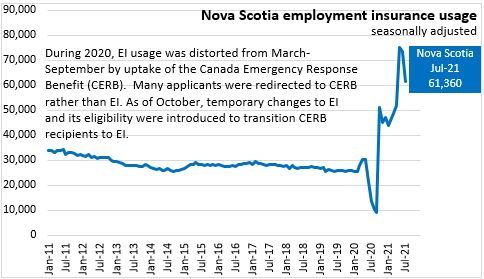
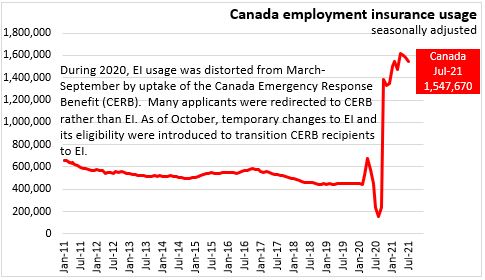
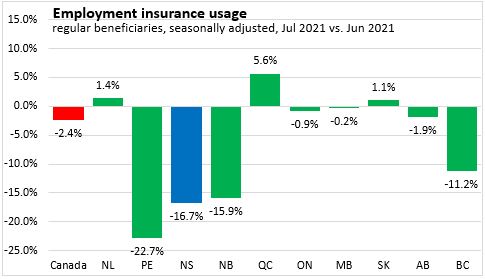
When compared to February 2020, EI usage has increased 246.6% across Canada as of July 2021. In Nova Scotia, EI usage was up 140.9% compared to the pre-pandemic benchmark. The largest percentage increases in EI usage were in Ontario, followed by British Columbia and Alberta. The lowest increases in EI usage were reported in Atlantic Canada.

By age and sex cohort, the increase in EI usage has been notably higher among women since the onset of the pandemic (Jul 2021 vs Feb 2020, seasonally adjusted). Prior to the pandemic, women had lower EI usage compared to men. The industries whose employment was most affected by public health restrictions and other pandemic precautions had a disproportionate share of female employment. In late September 2020, temporary changes to the EI program, including a reduction in the number of insured hours required to qualify, resulted in an increased number of women aged 15-24 and persons working in retail trade who received benefits.
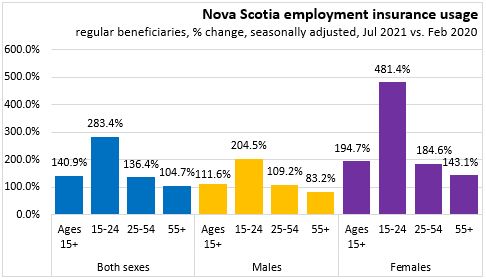
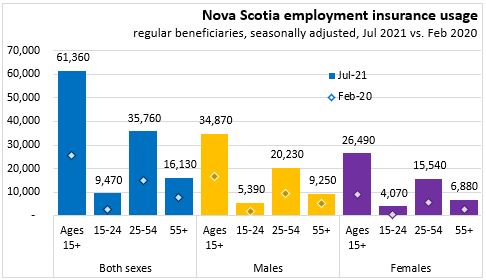
Among counties (comparing unadjusted results for July 2021 with July 2019), EI usage increased the most in Halifax and Lunenburg counties. Increases in EI usage were lowest in Inverness and Guysborough.
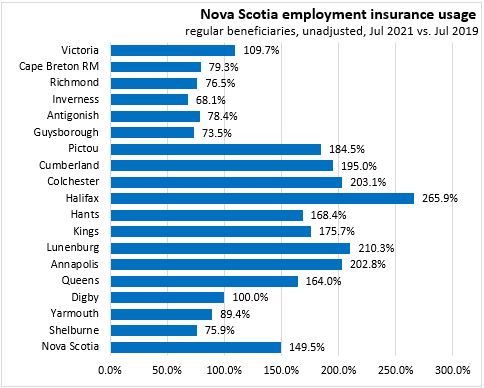
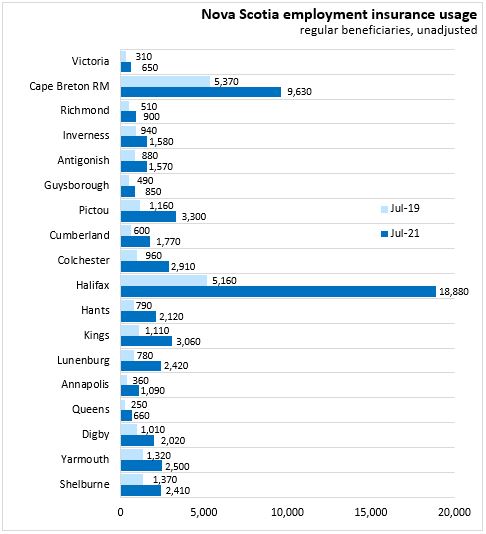
Note: Statistics Canada has not updated EI usage by occupation.
Source: Statistics Canada. Table 14-10-0011-01 Employment insurance beneficiaries (regular benefits) by province and territory, monthly, seasonally adjusted; Table 14-10-0323-01 Employment insurance beneficiaries by census division, monthly, unadjusted for seasonality